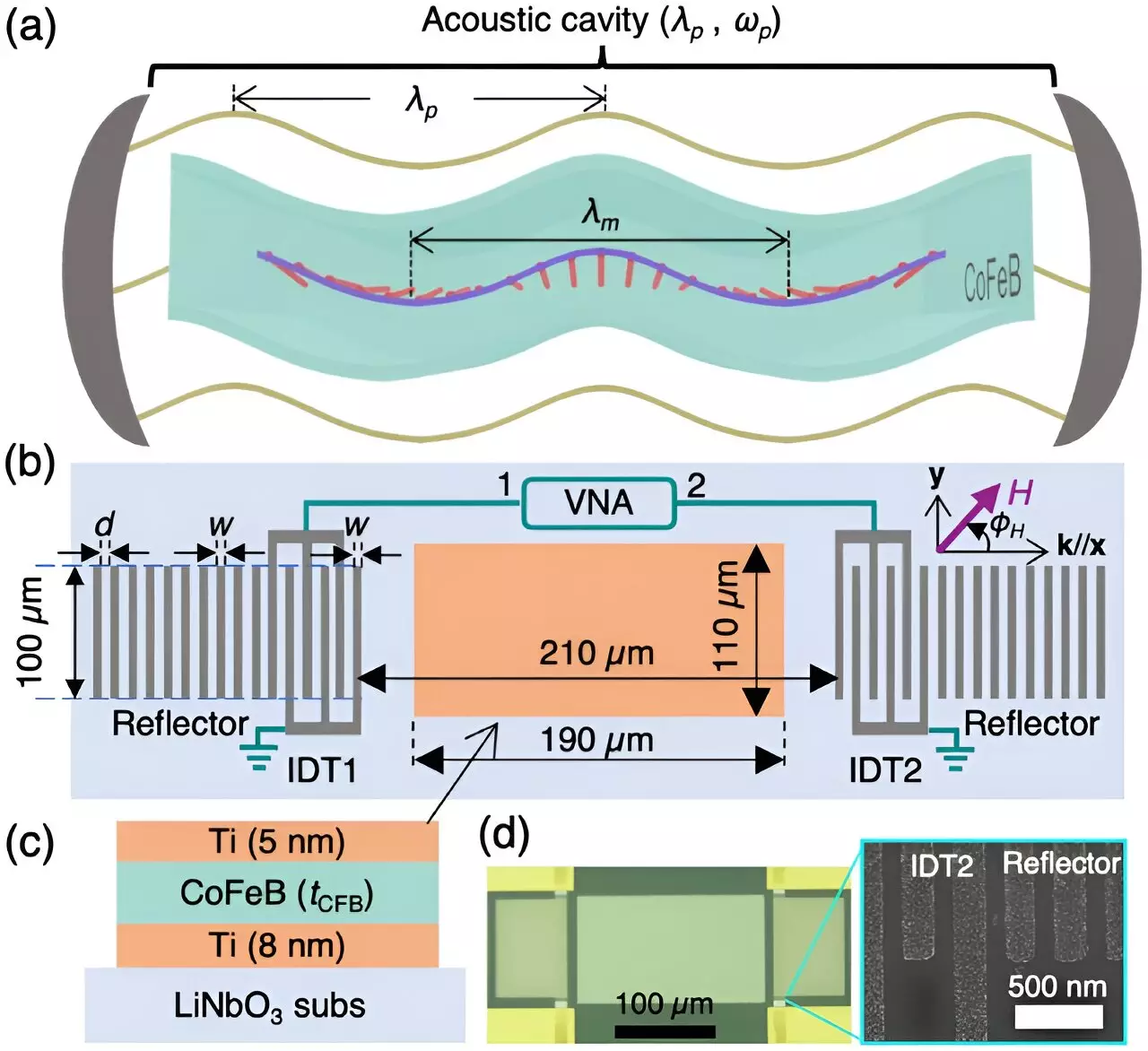In a groundbreaking study conducted by researchers from the RIKEN Center for Emergent Matter Science in Japan, a significant achievement was made in the field of wave-based devices. By establishing a strong coupling between two different types of waves – magnons and phonons – in a thin film at room temperature, the researchers have paved the way for the development of innovative hybrid devices for storing and manipulating information. This breakthrough represents a shift towards utilizing wave-like forms of energy such as sound, light, and spin to create more efficient and environmentally friendly devices.
Traditional computing devices rely on the movement of electrons, which have inherent limitations in terms of speed and energy efficiency. By harnessing the unique properties of magnons and phonons, researchers aim to create devices that minimize energy losses and maximize information processing capabilities. The combination of these two wave-like states has the potential to revolutionize the field of information and communication technologies, enabling the development of more advanced and efficient devices.
The researchers focused on magnons, which are quasiparticles representing the collective excitation of spins, and phonons, which are acoustic phenomena. By utilizing a nano-structured surface acoustic wave resonator, the team was able to create a strong coupling between these two wave-like forms in a Co20Fe60B20 film. This breakthrough was made possible by using shear sound waves, which are a better match for magnets than regular surface sound waves. Through this innovative approach, the researchers were able to achieve strong magnet-sound coupling at room temperature, setting the stage for further advancements in the field.
The establishment of a novel hybrid state between magnons and phonons opens up new possibilities for information processing. By developing devices that leverage the unique properties of these wave-like forms of energy, researchers can create more efficient and reliable systems for storing and manipulating data. The potential applications of this research extend to a wide range of fields, including telecommunications, computing, and signal processing.
The successful creation of a strong coupling between magnons and phonons in a thin film represents a significant step forward in the development of hybrid wave-based devices. By harnessing the power of wave-like energy forms, researchers have unlocked new opportunities for advancing information processing technologies. This breakthrough paves the way for the creation of more efficient, low-loss devices that have the potential to revolutionize the way we store and manipulate information.


Leave a Reply